Abstract
Niederpruem, Donald J. (Indiana University Medical Center, Indianapolis). Respiration of basidiospores of Schizophyllum commune. J. Bacteriol. 88:210–215. 1964.—The aerobic metabolism of basidiospores of the wood-rotting mushroom Schizophyllum commune was investigated by use of manometric techniques and specific respiratory poisons. Basal respiration was stimulated markedly by the uncoupling agent 2,4-dinitrophenol. This effect was pH-dependent and was sensitive to antimycin A. A positive periodic acid-Schiff reaction and a respiratory quotient (CO2/O2) of near unity pointed to carbohydrate as the endogenous substrate. Oxygen consumption was increased by sucrose, certain hexoses, d-xylose, acetate, and ethanol. Oxidative assimilation was evident with d-glucose and acetate. Glucose oxidation was inhibited by cyanide, azide, antimycin A, Atabrine, and phenylmercuric acetate. These data implicate cytochrome oxidase, b- and c-type cytochromes, flavoprotein, and essential sulfhydryl groups in basidiospore respiration.
Full text
PDF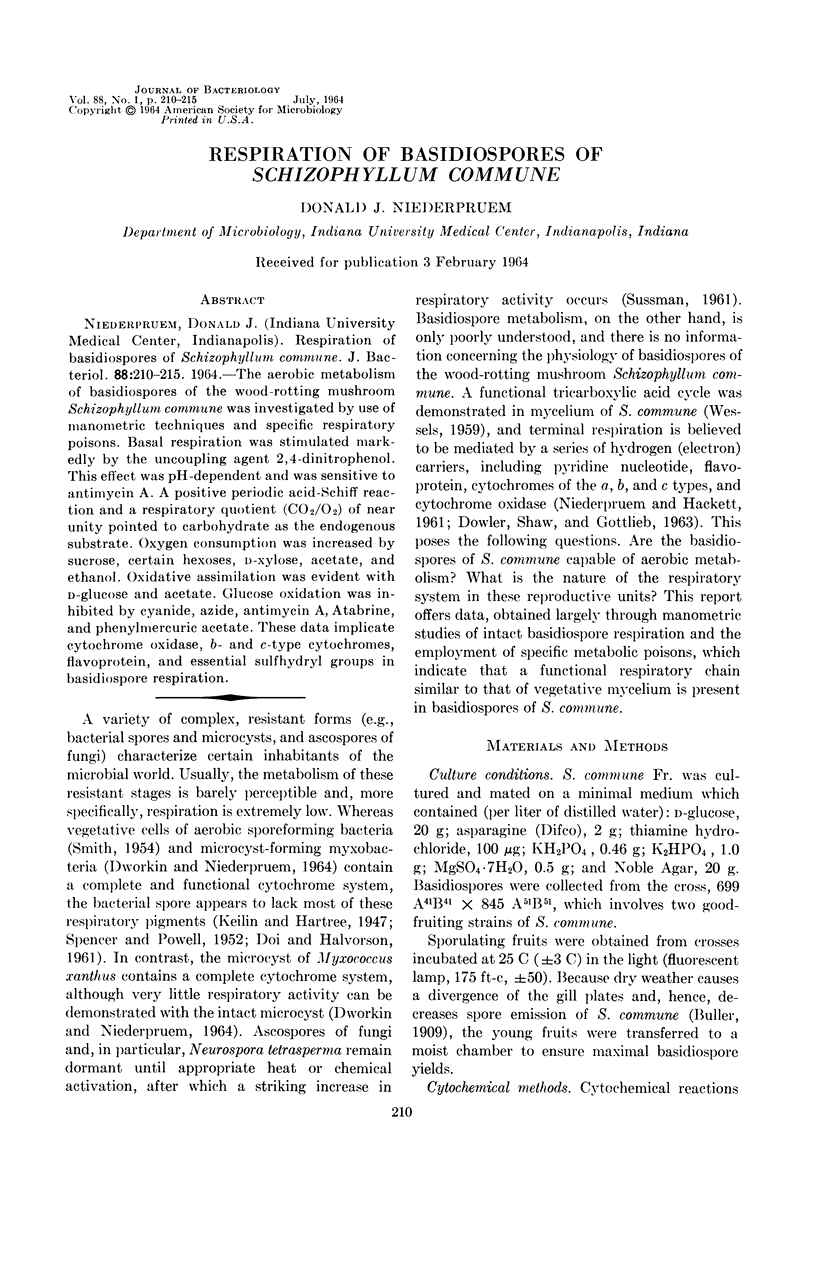
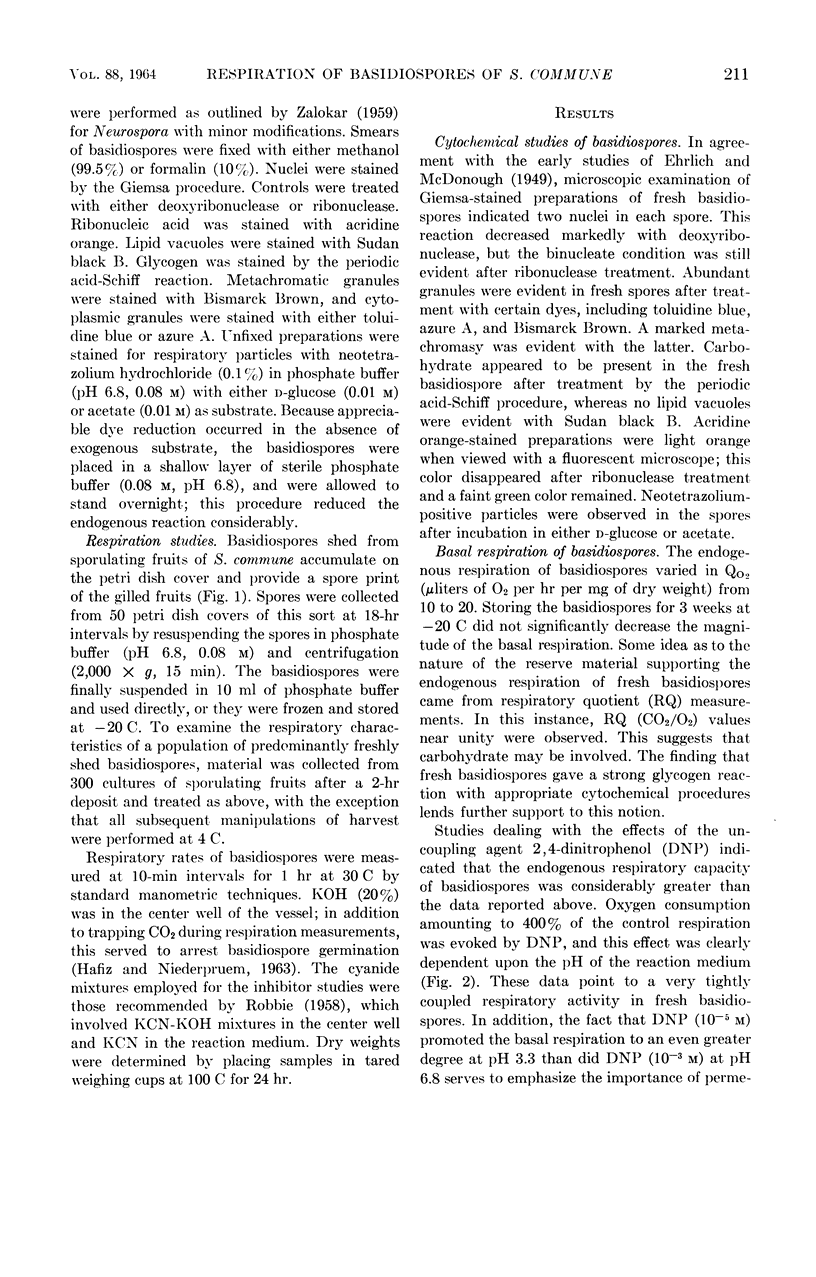

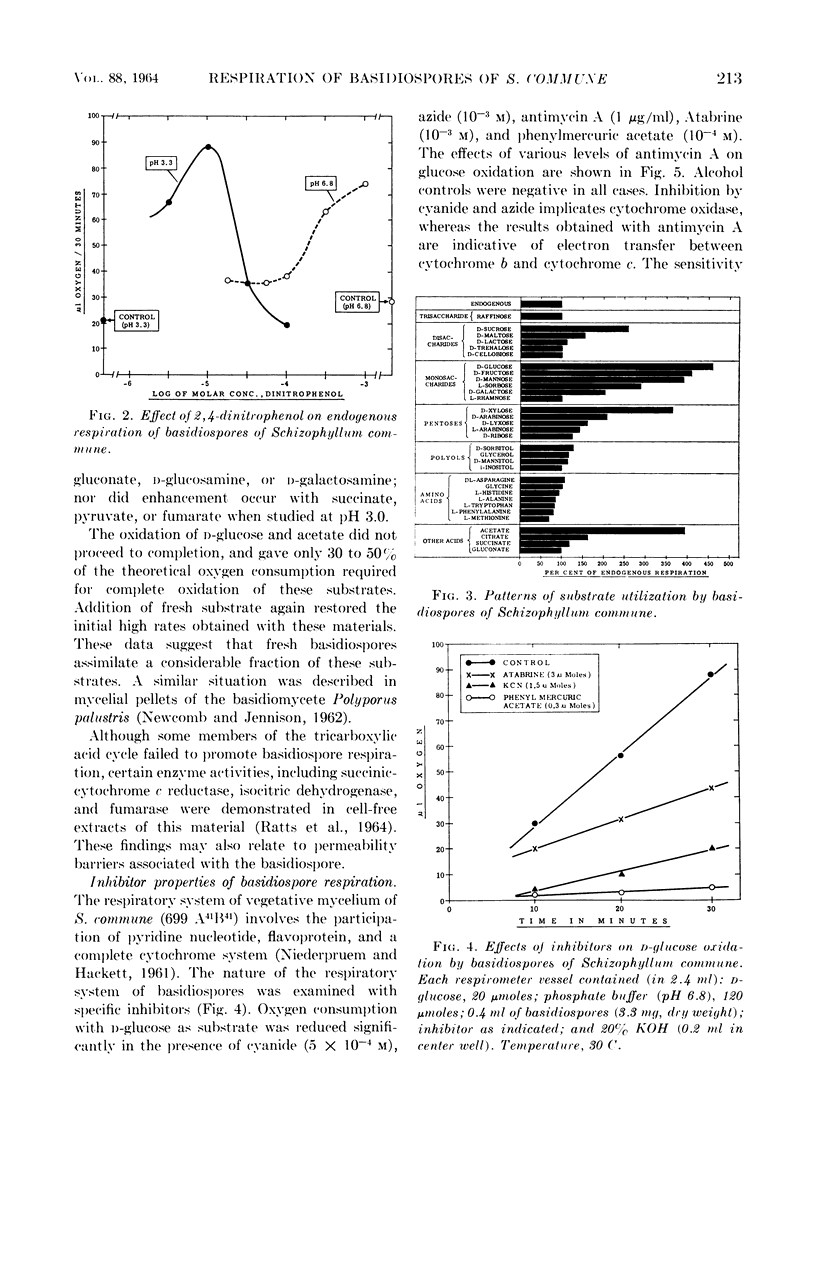
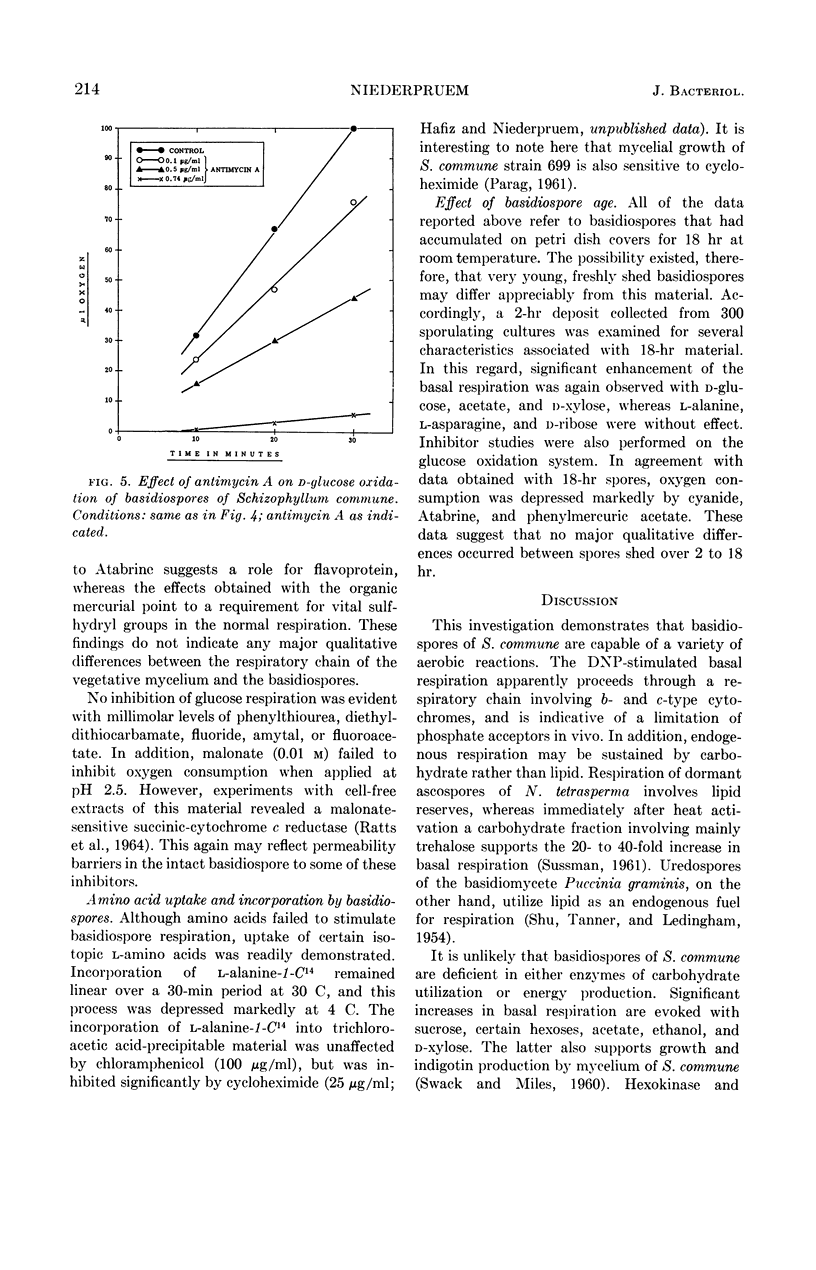
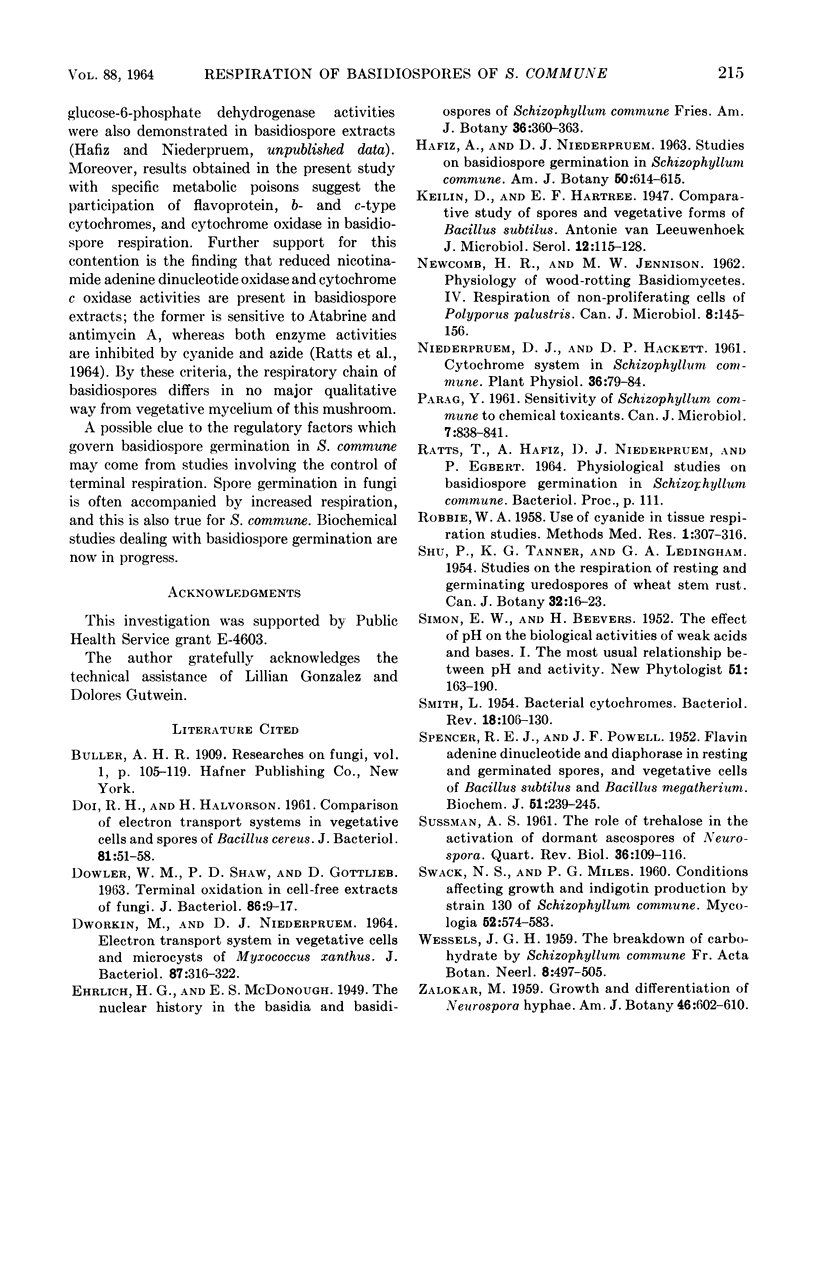
Images in this article
Selected References
These references are in PubMed. This may not be the complete list of references from this article.
- DOI R. H., HALVORSON H. Comparison of electron transport systems in vegetative cells and spores of Bacillus cereus. J Bacteriol. 1961 Jan;81:51–58. doi: 10.1128/jb.81.1.51-58.1961. [DOI] [PMC free article] [PubMed] [Google Scholar]
- DOWLER W. M., SHAW P. D., GOTTLIEB D. TERMINAL OXIDATION IN CELL-FREE EXTRACTS OF FUNGII. J Bacteriol. 1963 Jul;86:9–17. doi: 10.1128/jb.86.1.9-17.1963. [DOI] [PMC free article] [PubMed] [Google Scholar]
- DWORKIN M., NIEDERPRUEM D. J. ELECTRON TRANSPORT SYSTEM IN VEGETATIVE CELLS AND MICROCYSTS OF MYXOCOCCUS XANTHUS. J Bacteriol. 1964 Feb;87:316–322. doi: 10.1128/jb.87.2.316-322.1964. [DOI] [PMC free article] [PubMed] [Google Scholar]
- NEWCOMB H. R., JENNISON M. W. Physiology of wood-rotting basidiomycetes. IV. Respiration of non-proliferating cells of Polyporus palustris. Can J Microbiol. 1962 Feb;8:145–156. doi: 10.1139/m62-019. [DOI] [PubMed] [Google Scholar]
- Niederpruem D. J., Hackett D. P. Cytochrome system in Schizophyllum commune. Plant Physiol. 1961 Jan;36(1):79–84. doi: 10.1104/pp.36.1.79. [DOI] [PMC free article] [PubMed] [Google Scholar]
- PARAG Y. Sensitivity of Schizophyllum commune to chemical toxicants. Can J Microbiol. 1961 Oct;7:838–841. doi: 10.1139/m61-103. [DOI] [PubMed] [Google Scholar]
- SMITH L. Bacterial cytochromes. Bacteriol Rev. 1954 Jun;18(2):106–130. doi: 10.1128/br.18.2.106-130.1954. [DOI] [PMC free article] [PubMed] [Google Scholar]
- SPENCER R. E. J., POWELL J. F. Flavinadenine dinucleotide and diaphorase in resting and germinated spores, and vegetative cells of Bacillus subtilis and Bacillus megatherium. Biochem J. 1952 May;51(2):239–245. doi: 10.1042/bj0510239. [DOI] [PMC free article] [PubMed] [Google Scholar]
- SUSSMAN A. S. The role of trehalose in the activation of dormant ascospores of neurospora. Q Rev Biol. 1961 Jun;36:109–116. doi: 10.1086/403332. [DOI] [PubMed] [Google Scholar]



